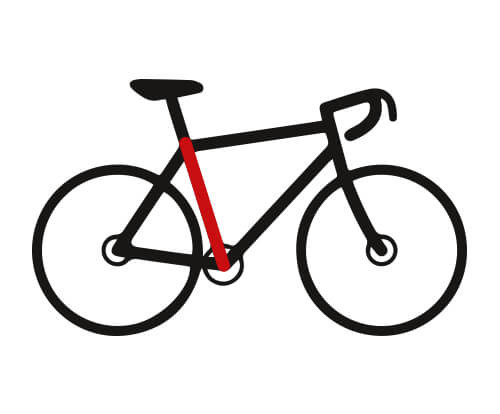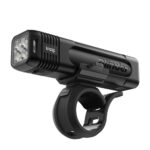Choosing the right size trekking bike is crucial for ensuring comfort, efficiency, and enjoyment on your adventures. A trekking bike that fits well will not only make your rides more pleasurable but also prevent potential injuries and discomfort during long journeys. This comprehensive guide will help you understand how to use a Trekking Bike Size Chart to find the perfect frame size for your body, so you can confidently embark on your next cycling tour.
Why Bike Size Matters for Trekking Bikes
Trekking bikes are designed for long-distance riding, often carrying luggage, and tackling varied terrains. Therefore, proper bike fit is even more critical than with other types of bicycles. An incorrectly sized trekking bike can lead to several issues:
- Discomfort: Riding a bike that’s too large or too small can cause pain in your back, knees, wrists, and neck. This discomfort becomes amplified on longer trekking trips.
- Inefficiency: If you’re stretched out too far or cramped, you won’t be able to pedal efficiently. This wastes energy and makes cycling harder than it needs to be, especially when carrying extra weight.
- Poor Handling: An ill-fitting bike can be harder to control, particularly when navigating uneven surfaces or carrying luggage. This can compromise your safety and enjoyment.
- Risk of Injury: Over time, riding an improperly sized bike can lead to overuse injuries and chronic pain.
Taking the time to determine your ideal trekking bike size using a size chart and understanding how to measure yourself is a worthwhile investment in your cycling comfort and performance.
How to Measure Your Inseam for a Trekking Bike
Your inseam length is a primary measurement used to determine the correct frame size for a trekking bike. Here’s how to measure it accurately:
- Stand against a wall: Wear your cycling shoes or stand barefoot for the most accurate measurement. Place your back against a flat wall, standing upright with your feet shoulder-width apart.
- Use a book or level: Position a thin book or a spirit level horizontally between your legs, mimicking a bike saddle.
- Position it correctly: Slide the book or level upwards until it gently presses against your crotch, just as if you were sitting on a saddle. Ensure the level remains horizontal throughout the measurement.
- Measure to the top edge: While holding the book or level in place, measure the distance from the top edge of the book/level straight down to the floor. This measurement is your inseam length.
For the most precise measurement, it’s recommended to have someone assist you.
Image: Measuring inseam length for trekking bike size calculation.
Understanding Trekking Bike Size Charts
Trekking bike size charts typically correlate your height or inseam measurement with a recommended frame size. Frame sizes are usually given in inches or centimeters and refer to the length of the seat tube.
Important Considerations when using a size chart:
- Manufacturer Variations: Size charts can vary slightly between different bike manufacturers. Always consult the specific size chart provided by the brand of trekking bike you are considering.
- Frame Geometry: Trekking bike geometry can influence sizing. Some bikes may have a more relaxed or sporty geometry, affecting how the frame size translates to fit.
- Personal Preference: Some riders prefer a slightly smaller frame for more agility, while others opt for a slightly larger frame for increased stability, especially on long tours.
The chart below provides a general guideline for trekking bike frame sizes based on body height. Remember to use it as a starting point and ideally test ride a bike to confirm the best fit.
Trekking Bike Size Chart by Height
This chart provides a general guide for trekking bike frame sizes. Always double-check with the manufacturer’s specific size chart for the most accurate recommendation.
| Body Size (cm) | Frame Size (cm) |
|---|---|
| 150-160 | 42-47 |
| 160-170 | 47-52 |
| 170-175 | 52-54 |
| 175-180 | 54-56 |
| 180-185 | 56-58 |
| 185-190 | 58-60 |
| 190-195 | 60-63 |
| 195+ | 63+ |
How to Measure Trekking Bike Frame Size (If Unknown)
If you already own a bike and need to determine its frame size, or if the size isn’t clearly marked, you can measure it yourself. There are two common methods:
- Center-to-Center (C-C): Measure from the center of the bottom bracket (where the pedals attach) to the center of the top tube where it intersects with the seat tube.
- Center-to-Top (C-T): Measure from the center of the bottom bracket to the very top of the seat tube.
 How to measure bike frame size
How to measure bike frame size
The measurement method used can depend on the bike manufacturer or the standards they follow. Knowing which measurement is used for the size chart you are referencing is important for accuracy.
Beyond Height: Fine-Tuning Your Trekking Bike Fit
While height and inseam are excellent starting points, achieving a truly perfect trekking bike fit may require considering other factors and adjustments:
- Arm Length and Torso Length: People with longer torsos or arms may prefer a slightly larger frame, while those with shorter limbs might find a smaller frame more comfortable.
- Flexibility: Riders with limited flexibility might benefit from a frame size that allows for a more upright riding position.
- Riding Style and Terrain: If you plan to ride primarily on paved roads, a slightly larger frame might be suitable. For more varied terrain or off-road sections, a slightly smaller, more maneuverable frame could be preferable.
- Professional Bike Fit: For serious trekking cyclists or those experiencing discomfort, a professional bike fit is highly recommended. A bike fitting expert can precisely adjust your bike and riding position to optimize comfort and efficiency.
Conclusion
Finding the right trekking bike size is a fundamental step towards comfortable and enjoyable cycling adventures. By using a trekking bike size chart, accurately measuring your inseam, and considering other personal factors, you can confidently select a frame size that sets you up for countless miles of happy trekking. Remember to always consult the manufacturer’s size chart and, whenever possible, test ride a bike before making a purchase to ensure the perfect fit for your next journey.

